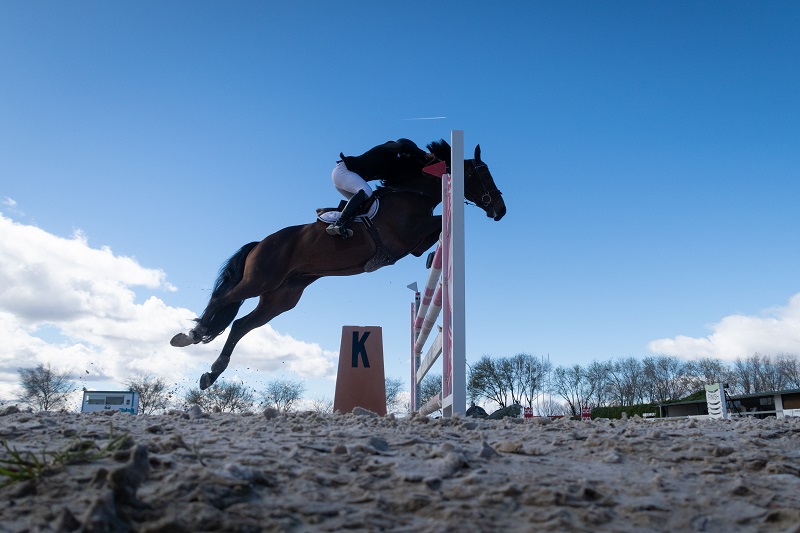How to Improve Your Horse's Speed and Agility for Jumping

Speed and agility are key components in competitive jumping, and improving these attributes can make a significant difference in your horse’s performance. Whether you're preparing for a show jumping competition or simply aiming to enhance your horse’s overall jumping abilities, a structured approach to training can help you see progress. Here are practical strategies to boost your horse’s speed and agility for jumping.
1. Build a Solid Foundation with Flatwork
Before focusing on speed and agility, it’s essential to ensure your horse has strong foundational skills in flatwork. Flatwork builds the core strength, balance, and flexibility necessary for effective jumping. These exercises also improve your horse's ability to respond quickly and accurately to your cues, which is crucial for fast, precise movements during a jump course.
Many seasoned riders, including Alec Lawler, emphasize the importance of a strong foundation in flatwork. Lawler’s approach focuses on building control and responsiveness through basic movements, which lays the groundwork for more advanced jumping techniques. A horse with strong flatwork skills will be able to navigate jumps with more speed and agility, as they will be better at adjusting their stride and balance in response to the challenges presented during a course.
2. Implement Speed-Boosting Exercises
To improve your horse’s speed, it’s essential to gradually introduce exercises that focus on developing their quickness and stamina. One of the most effective ways to do this is by incorporating interval training into your routine.
Interval training involves alternating between short bursts of fast movement and slower recovery periods. For example, canter or gallop your horse at full speed for 30 seconds, followed by a few minutes of slower work or a walk. This type of exercise helps build both muscle strength and cardiovascular fitness, enabling your horse to sustain higher speeds during a jumping course.
You can also try timed sprints in the arena. Mark out a section of the arena and encourage your horse to gallop at top speed, aiming to complete the distance within a set time. As they get fitter, they will naturally become faster, and with more repetitions, your horse will learn how to maintain speed during a jumping session.
3. Improve Agility with Lateral Movements
Agility in jumping is about your horse's ability to change direction quickly, react to your cues, and adjust their body position mid-jump. Incorporating lateral movements into your training is a great way to enhance these abilities. Lateral movements force your horse to engage their hindquarters, improve their flexibility, and develop quick reflexes.
Exercises like shoulder-ins, haunches-ins, and leg-yields help your horse become more supple and responsive to your aids. They also promote a better overall balance, which is essential when negotiating tight turns or making sudden adjustments between jumps. By working on lateral movements, your horse will develop the agility required for fluid, precise movements through a jumping course.
4. Set Up Jumping Drills for Speed and Agility
Jumping exercises that require quick changes in direction and rhythm are essential for improving both speed and agility. Begin by setting up a simple course of jumps with varying distances and angles. Incorporate sharp turns between obstacles, encouraging your horse to adjust their stride length and speed while maintaining their balance and focus.
Gridwork is another useful exercise. Set up a series of jumps placed in a grid pattern, which forces your horse to approach each obstacle with speed while maintaining correct form and agility. Gridwork encourages your horse to pick up their feet quickly, helping them become more agile in jumping and more responsive to changes in pace.
5. Strengthen Your Horse’s Hindquarters
The strength of a horse’s hindquarters plays a crucial role in their ability to jump with speed and agility. A strong back end gives your horse the power to push off from the ground quickly, clearing obstacles with less effort. To improve hindquarters strength, focus on exercises like hill work and trot poles. Hill work engages the hind muscles, while trot poles help develop rhythm, strength, and coordination.
Another effective exercise is the "canter transition" drill. Ask your horse to transition between canter and trot smoothly while maintaining forward motion. This exercise will improve their ability to shift gears quickly, which is essential for both speed and agility during a jumping course.
6. Maintain a Balanced Diet and Fitness Regimen
Finally, a balanced diet and regular fitness regimen are essential for supporting your horse’s performance in jumping. Ensure your horse’s diet provides the proper nutrients to fuel their muscles and boost their stamina. A diet rich in high-quality forage, along with the right balance of protein, carbohydrates, and fats, will provide the energy necessary for peak performance.
Regular fitness training, including both aerobic and anaerobic exercises, ensures your horse stays in top condition and has the energy and strength needed for both speed and agility in jumping.

